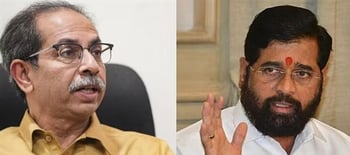
Who Represents the True Shivaji Legacy?
The dispute over shivaji temples is not just a symbolic one; it carries deep historical, cultural, and political significance in maharashtra, where shivaji Maharaj is revered as a national hero and symbol of maratha pride. Both factions of the shiv sena have sought to associate themselves with shivaji Maharaj’s legacy, often using his image and values in their political campaigns. However, Thackeray’s recent campaign promise to prioritize the construction and renovation of shivaji temples has drawn criticism from Dr. Shinde, who accused thackeray of using shivaji Maharaj’s image for political gain.
Dr. Shrikant Shinde argued that Thackeray’s promises are inconsistent with his past actions as chief minister, implying that Thackeray’s faction is making empty promises to win voter support. “Why didn’t he take these steps when he had the power?” Dr. Shinde questioned, underscoring what he claims is Thackeray’s lack of action on issues related to maratha heritage during his tenure.
This latest exchange reflects the ongoing struggle between the two Senas, which has been marked by ideological differences and disputes over Shiv Sena’s core principles and values. Since the party’s split, Eknath Shinde and uddhav thackeray have consistently clashed over who represents the “true” Shiv Sena. Eknath Shinde’s faction claims to be the legitimate custodian of Shiv Sena’s legacy, emphasizing Hindutva and the values of its founder, Bal Thackeray. On the other hand, uddhav Thackeray’s camp has focused on broader social issues, seeking to broaden the party’s appeal beyond its traditional base.
The conflict over shivaji temples highlights how each faction seeks to data-align itself with shivaji Maharaj’s image, aiming to connect with voters through his powerful symbolism. While Thackeray’s promises target the cultural sentiments of Maharashtra’s voters, Shinde’s camp aims to challenge his credibility by questioning his motives and track record.
With the assembly elections approaching, the shivaji temple debate could influence the outcome in key constituencies, particularly those where shivaji Maharaj’s legacy holds strong cultural and emotional appeal. Maharashtra’s voters may see this issue as a test of each leader’s commitment to preserving the state’s heritage. As the campaign heats up, both factions will likely continue to use shivaji Maharaj’s image to rally support, sparking further debates and discussions.
The results of the maharashtra assembly polls will reveal which faction’s approach resonates more with voters, potentially reshaping the political landscape of the state. Regardless of the outcome, the shivaji temple issue underscores the enduring legacy of shivaji Maharaj in Maharashtra’s political discourse and how his image remains a powerful force in shaping electoral narratives.

